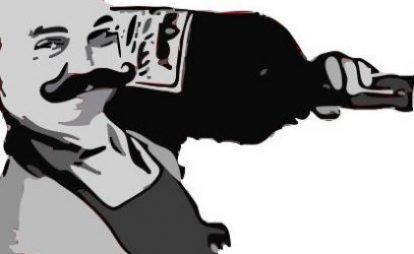Yesterday was the longest day of the year in the northern hemisphere and the vines got an awful lot of sun and heat in my part of the world. Elsewhere, people are concerned with other matters, as we will find out in the latest JollyCellarMaster weekly:
Perception, Maps and Tariffs
The end is the beginning is the end
Another week dominated by international trade deals in good and bad news. The good especially for European producers of wine (and other delectable like Parmigiano Reggiano, cognac or jambon iberico) is that the US and the EU have managed to put to rest a 17-year-old trade dispute about subsidies for aircraft manufacturers. What started as a clash over subsidies for Airbus and Boeing respectively seventeen years ago, led to punitive tariffs employed since October 2019 that amounted to over $3.3bn. Even though the original dispute had nothing to do with food products and beverages, farmers suffered the most from the measures. For example, the French wine and spirits exporter group FEVS calculated that lost sales amounted to €450 million ($546 million) since the implementation of the 25% tariff on exports more 20 months ago and noted that the taxes had severely disrupted the wine and spirits industry. As part of a five-year truce, these tariffs have now been dropped and while the two parties will continue to work on resolving the issue, the announcement came with a thinly veiled warning towards China as they also took a pledge to work together to address non-market practices of third parties.
Which takes us to the bad news in terms of international trade as Australia has decided to take the ongoing wine dispute with China to the World Trade Organization though that could also be seen as a silver lining on finding a solution if you are an optimist like me. For now though, Australia has announced that it will file a formal complaint with the WTO)after China imposed up to 218% tariffs on its wine last year.
Just to give you an idea of the effect of the tariffs in real terms, Australian winemakers shipped just A$12m ($9m; £6.5m) of wines to China in the four months from December 2020 to March 2021, according to industry figures, while iIn the same time period a year earlier, they had exported A$325m of wine to China. That’s a 96% drop year on year. Yikes!
A Digital Atlas of an Entire Country
Enough of the bad news, here is a real gem for wine geeks: the Austrian Wine Marketing Board (ÖWM) in collaboration with the University of Vienna have developed a digital map of its 27 wine producing regions with detailed information about more than 4,300 single vineyards with descriptions and data about all levels of origin. A single vineyard is called a Ried as you may remember from my conversation with Carmen Augschöll of the ÖWM and their description contains information about the area under vine, elevation, incline, orientation, average temperature, precipitation and sunshine hours, for example, which are key parameters for determining the quality and characteristic flavour of a wine. Awesome, don’t you think?
Sustainability Explained and Communicated
Lastly, at least for this week, here is an interesting piece of research on the perception of French wine buyers regarding environmental issues in wine production. Researchers from the Ecole Superieur d’Agriculture in Angers, France, analyzed consumers’ perceptions of environmental issues in wine production, specifically with respect to a selection of agroecological measures in the vineyard. While everyone seems to be talking about sustainable agriculture and winemaking, there is relatively little academic work carried out on the actual perception of consumers on the subject.
The authors carried out an online national with 1022 respondents in July 2019, and the factors that influenced perceptions were identified using an analysis of variance. One of the key findings was that “the environmental issue of highest concern for consumers was the use of pesticides“, while the majority of the measures selected were perceived as having a positive impact on the environment and practices aimed at improving biodiversity were highly valued by consumers. However, the research also showed that effective communication of such practices to consumers is crucial if winemakers want to benefit from the implementation of environmentally friendly practices, which unfortunately is not new and continues to be a challenge.
—
And that’s all for this week, but if you have an interesting story, connect on Twitter and if you want to stay in the loop about things happening at the JollyCellarMaster and the world of wine, make sure you sign up to our newsletter. And if you want to come on the show and talk about wine, make sure you drop us a line.
—
Disclaimer: As always, I’d like to be completely transparent about affiliations, conflicts of interest, my expressed views and liability: Like anywhere else on this website, the views and opinions expressed are solely those of the original authors and other contributors. The material information contained on this website is for general information purposes only. I endeavor to keep this information correct and up-to-date, I do not accept any liability for any falls in accurate or incomplete information or damages arising from technical issues as well as damages arising from clicking on or relying on third-party links. I am not responsible for outside links and information is contained in this article nor does it contain any referrals or affiliations with any of the producers or companies mentioned. As I said, the opinions my own, no liability, just thought it would be important to make this clear. Thanks!




